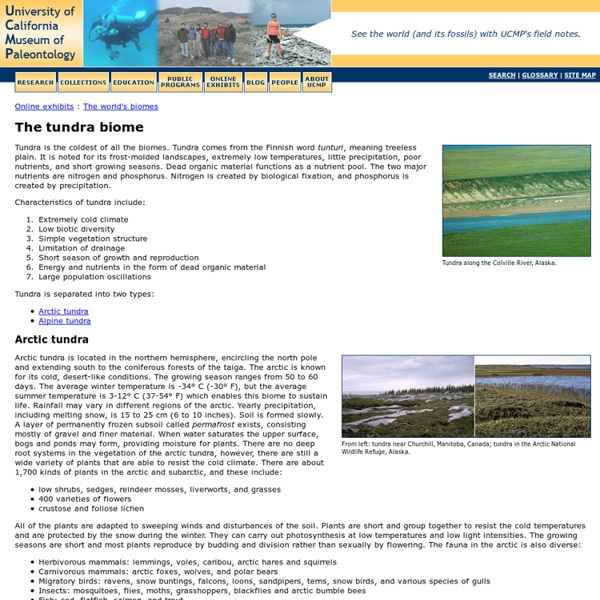Tundra Biome

Tundra Biome
The Tundra Biome In the tundra, conditions are cold, with an annual average temperature less than 5 C, and precipitation (mostly in the form of snow) less than 100 mm per year (see figure at right). The summer is brief, with temperatures above freezing lasting for only a few weeks at most. However, this "warm" summer coincides with periods of almost 24 hour daylight, so plant growth can be explosive. The map below shows the tundra spreading across the northern hemisphere. Tundra is largely restricted to the northern hemisphere; there simply is no comparable land mass in the southern hemisphere with the appropriate climate. The biggest threat, however, is from oil and gas development and the resulting global warming. Back
Forest Video & Map GREEN
Click on a biome on the above graph for more information, informative videos, and links to scientist profiles, travel information, lesson plans and species profiles for each region. We'd like to know where you're coming from. If you've used this site for a class project or browsing for fun, add yourself to our map and communicate with other "ecogeeks"
Earth Floor:Tundra Biome
Arctic Tundra Arctic tundra is found across northern Alaska, Canada, and Siberia. This biome has long cold winters and short cool summers. One unique characteristic of the Arctic tundra is permafrost--ground that is permanently frozen. Curiously, during the summer Arctic tundra is characterized by lots of surface water. Back | Next
Related:
Related:



